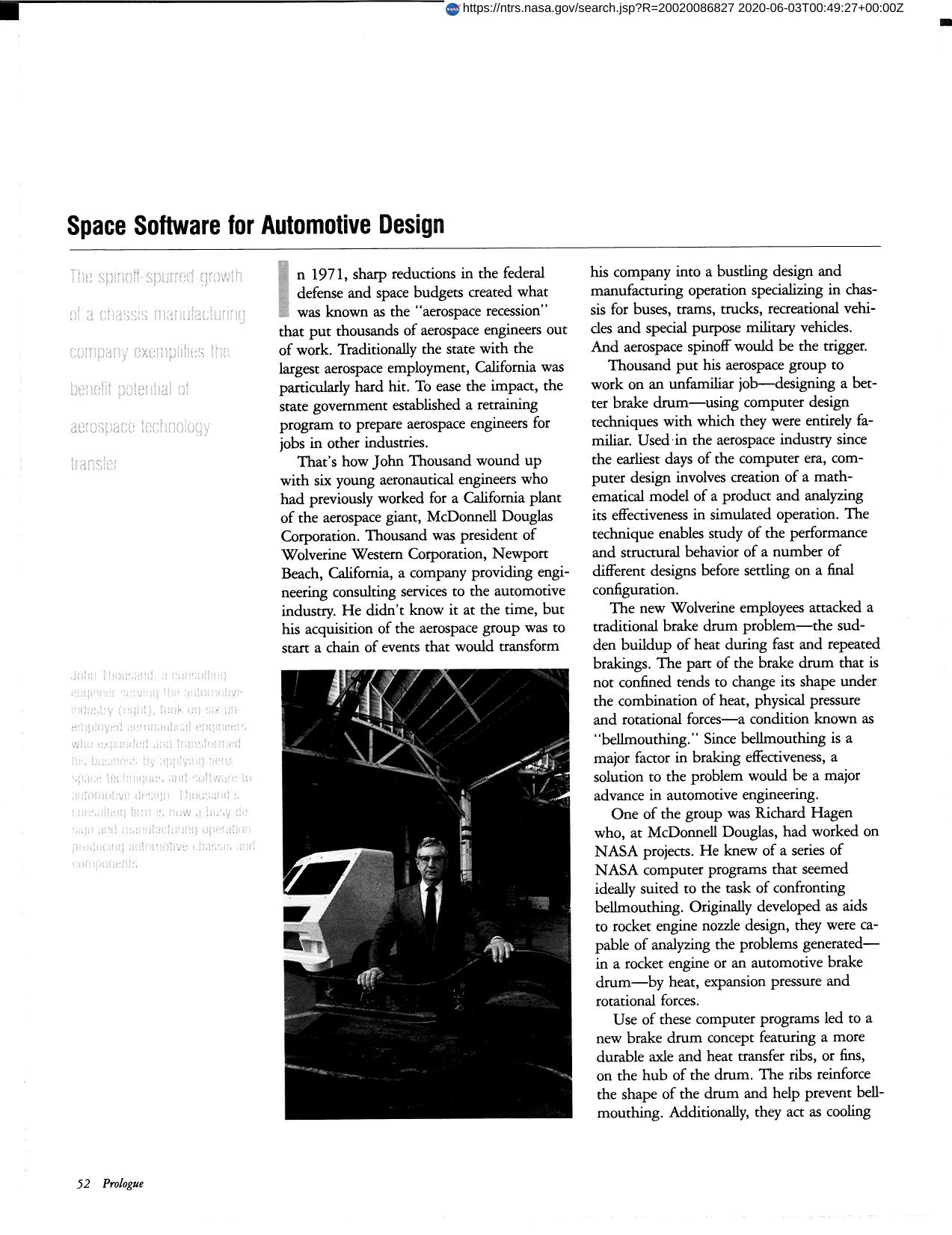
Space Software for Automotive Design
John Thousand of Wolverine Western Corp. put his aerospace group to work on an unfamiliar job, designing a brake drum using computer design techniques. Computer design involves creation of a mathematical model of a product and analyzing its effectiveness in simulated operation. Technique enables study of performance and structural behavior of a number of different designs before settling on a final configuration. Wolverine employees attacked a traditional brake drum problem, the sudden buildup of heat during fast and repeated braking. Part of brake drum not confined tends to change its shape under combination of heat, physical pressure and rotational forces -- a condition known as bellmouthing. Since bellmouthing is a major factor in braking effectiveness, a solution of problem would be a major advance in automotive engineering. A former NASA employee, now a Wolverine employee, knew of a series of NASA computer programs ideally suited to confronting bellmouthing. Originally developed as aids to rocket engine nozzle design, it is capable of analyzing problems generated in a rocket engine or automotive brake drum by heat, expansion, pressure and rotational forces. Use of these computer programs led to new brake drum concept featuring a more durable axle, and heat transfer ribs, or fins, on hub of drum. Wolverine now incorporates these parts in complete high quality chassis for a variety of automotive applications: for military command, control and communications centers; for intelligence vehicles; and for multipurpose vehicles that can be airlifted on military transports. In civil sector, Wolverine chassis are used in buses, recreational vehicles and delivery trucks; also sold as turnkey medical diagnostic facilities.
Full article: http://hdl.handle.net/hdl:2060/20020086827

Space Software for Automotive Design

Space Software for Automotive Design


